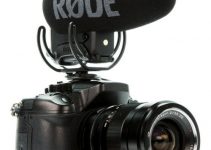Sony added a ton of awesome stuff to the a7S III. They kinda had to consider this camera is coming out way later than everyone expected them to release it. One feature that was overshadowed by the addition of 4K120, 10-bit internal, CFexpress Type A, and all the other goodies is the ability to record gyroscopic information to the footage.
What good does having that information even do? Well, filmmaker Sidney Diongzon is taking a look at how using the gyro information to stabilize footage in Catalyst Browse compares to the standard built-in in-body image stabilization and the Active IS mode. He also wants to figure out which you should use when.
Just to make things clear, any type of in-body or electronic stabilization is going to lack in comparison to a true gimbal or another external stabilizing device. They are purpose-built for the job and offer a much wider range of motion.
Getting into the tests, Diongzon recorded a test using no stabilization at all, the standard stabilization, and then the active stabilization.
A quick explainer of the active mode is that the camera performs a slight 1.1x crop and then uses gyro information during recording to electronically stabilize the camera in addition to using the in-body system.
The results are as you would expect. No stabilization ain’t great. Standard stabilization is functional. And, if you are okay with the crop, the Active mode is the best.
Now, comparing that to the gyro-stabilized footage in Catalyst Browse, it is again quite clear that Catalyst does an amazing job.
There is one catch for using Catalyst Browse: you can’t use any stabilization in camera if you plan on using it. That means you are going to be taking a risk that it’ll look good in the end. There’s a good chance of that, but you won’t be able to check on set and know before you end for the day.
One interesting tip is that if you do plan on stabilizing in post that you should ignore the 180-degree shutter rule and opt for a slightly faster shutter speed. Motion blur can impact the final quality of digitally stabilized footage and by bumping up to 1/80 or 1/100 for 24p shooting can help. Apply the same logic to your other frame rates.
Again, a gimbal will always be king, but it is good to know that the a7S III has multiple options for quick and dirty stabilization if you don’t have a gimbal on you.
[source: Sidney Diongzon]
Order Links:
Disclaimer: As an Amazon Associate partner and participant in B&H and Adorama Affiliate programmes, we earn a small comission from each purchase made through the affiliate links listed above at no additional cost to you.



